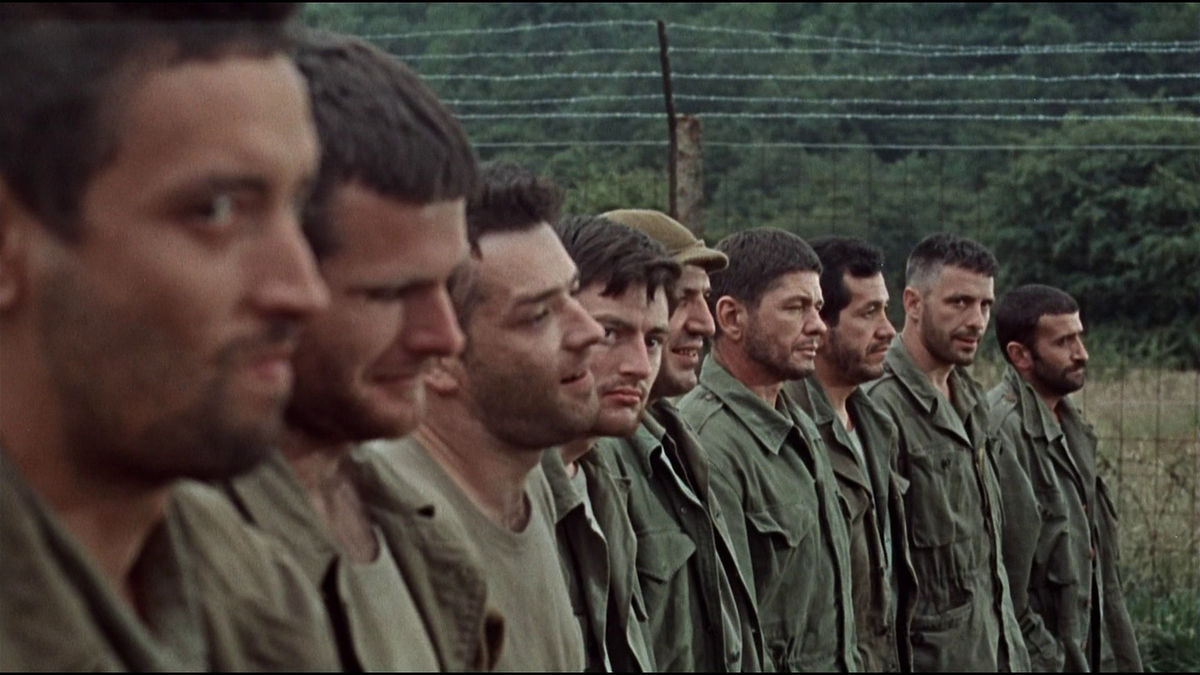For me, being trapped in the house brings on an odd kind of nostalgia. It isn’t that I’m wistful for when I had the flu and was bedridden for two weeks. It’s just that the isolation makes my mind wander to little moments of great import from longer ago than I usually like to consider.
I grew up in the suburbs. For as long as I could remember, I had dreamed about having a cinema within walking distance. Imagine: being able to roll out of bed and bang my head on a movie theater! That dream came true on a balmy late spring day in 1967 when the Stutson Theater opened just a half mile away.
I can’t say that it opened with much ceremony. The only thing special was a truck giving out free samples of Wink soda. The movie on that auspicious day was Robert Aldrich’s The Dirty Dozen. I was so excited to have that theater practically in my backyard that I went twice a week throughout that movie’s seven-week run then saw every movie they showed until I went off to college five years later.
Needless to say, I have a soft spot in my heart for The Dirty Dozen. I was particularly titillated at the time by the controversy surrounding it. Its violence was quite shocking (some of it still is) and it ran afoul of veterans who felt that it put the army in a bad light. Of course, this was 1967 so there was a lot of that going around.
The Dirty Dozen is a great example of those big screen action films that were coming out of the woodwork in the 60’s. They all seemed to have three things in common: They were loud, they featured male ensembles, and one of those males was Charles Bronson. Many of these, like The Dirty Dozen, were also riding a wave of interest in World War II as it was starting to slip from the collective memory. These movies were “war is hell” as nostalgia.
Unlike most of these, The Dirty Dozen still holds up. A lot of credit goes to Aldrich’s extraordinarily muscular direction. Unlike today’s action films which insist on a BIG scene every five minutes, Aldrich takes his time. He establishes his characters with the same ruthless efficiency he expects them to show the enemy, then slowly builds to his spectacular raid on an enemy playground in a French chateau. In looking at it now, The Dirty Dozen comes off as a model for creating narrative tension. Beyond that climax, the movie has only one other full-blown action set piece, an Allied war game that is played more for laughs than thrills.
The other reason this movie fairly crackles is the cast. It is hard to imagine a movie today bringing this kind of cast to the table. It isn’t that they couldn’t afford the actors; it’s that the bench for this kind of a cast isn’t very deep. If this movie were remade today, we would simply have another one of those movies that tells us that the world can only be saved by good looking studs with blue eyes and high cheekbones. No one would ever call Lee Marvin, Telly Savalas, Donald Sutherland or Bronson a “pretty boy.”
The performances are filled with myriad pleasures. John Cassavetes was Oscar-nominated for his role as the frightened sociopath Victor Franco, but the best moments come from the actors who have to make the most of their one big scene. Chief among these are Sutherland as a dope who finds without notice that he has to imitate a general (the scene made his career) and famed running back Jim Brown having to rush the yard while setting off handfuls of grenades.
And speaking of nostalgia, whatever became of Wink soda?


